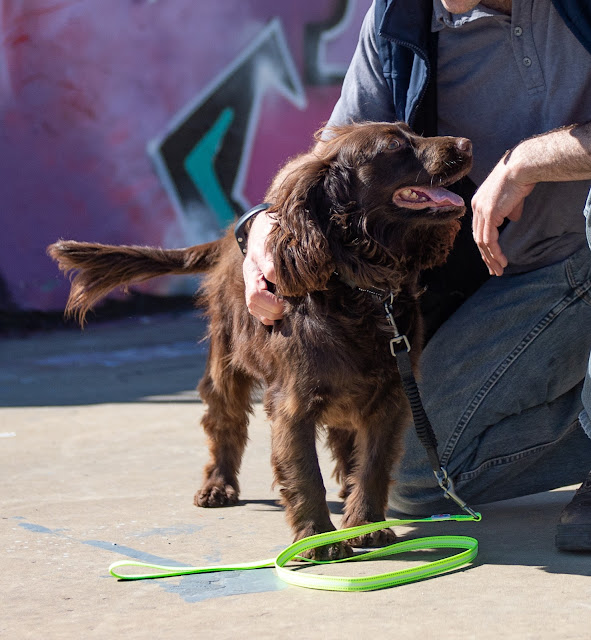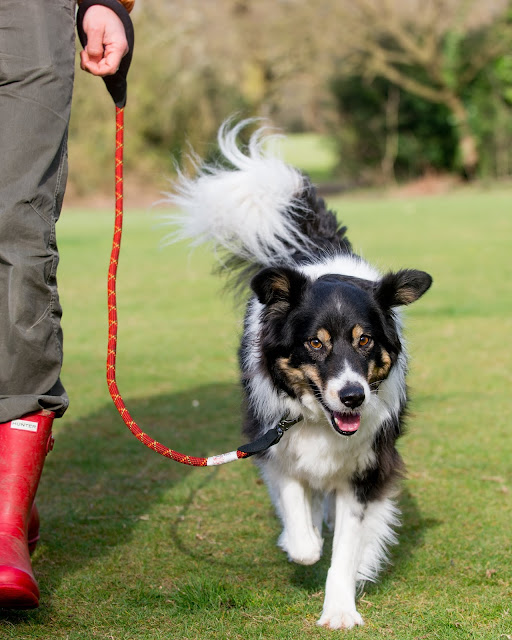
As we move into the warmer months of the year, you’ll most likely be spending more time outside with your dog. You’ll also want to make sure your dog knows how to behave while you’re on your walks.
In this series of “How To:” articles, we will give you training tips and tricks to make sure you and your dog get the most out of Spring and Summer.
Walking with your dog at a "heel" is more formal than walking your dog on a loose leash. Teaching a dog to heel involves training them to stay close by your side while walking and is a great way to instil self-control in your dog, whether they’re on or off-leash. Any dog—even the most energetic pups—can learn to heel, and teaching this command is not too hard as long as you're persistent and consistent.
Prepare for Training
You will need to have plenty of treats on hand. For training (especially when introducing a new or difficult command), choose treats that your dog absolutely can't resist. Small pieces are best because you will be giving your dog lots of treats at first to reward good behaviour and you don't want to spoil their diet. For stubborn dogs or small dogs that make it difficult to bend down and offer treats while in the heel position, use a long-handled spoon coated with peanut butter, cream cheese, or wet dog food.
You can train a dog to heel with or without a leash. If you're working with your dog off-leash, make sure that you're in a safe area, such as a fenced-in garden. For your first attempts, be sure to stay in an area with little distraction, such as your garden. If you go somewhere that has too many other interesting things going on, treats may not be enough to hold your their attention.
Sit, Heel, and Treat Continuously
Start off with your dog sitting at your side. Hold a handful of treats or the wooden spoon close to your dog's nose and tell them to "heel." Begin to walk. For the first few tries, take just a few steps and give your dog treats continuously.
Phase Out the Treats
Once you're able to walk with your dog at a heel for several steps, it's time to start cutting down on the number of treats you give them. Again, begin with your dog sitting at your left side, and give the command "heel." Give your dog a treat and then take a step before giving them another. Be sure to give your dog a treat before their interests wander. Keep the distance you walk with your dog at a heel fairly short, and gradually work up to walking longer distances between treats.
Add Distance and Distraction
Once you're able to walk with your dog in a heel with only a few treats, it's time to start adding more distance to your walk. You can give your dog treats but begin to slowly phase them out. If your dog is continually breaking out of a heel at any point, you may be moving ahead too quickly. Go back and repeat the distance and number of treats where you were last successful in keeping them at a heel.
Once you're able to walk a fairly long distance with fewer treats, it's time to add some distraction. You can work on this training at a park or take walks through your neighbourhood on a leash. When you first begin this, you may need to go back to treating your dog continuously and keep the walks short until they understand what's expected. Again, slowly work up to longer distances and fewer treats.
Problems and Proofing Behaviour
It's not uncommon for dogs to break out of heel when learning this command, especially early on. Your patience and consistency are key to working through some of the challenges you'll face. Keep with it and your dog will eventually learn what you want them to do.
If needed, go back a step or two at any stage in the training. One of the common mistakes that owners make is moving onto the next step before their dog is ready. If your dog makes several mistakes in a row, simply go back to giving them more treats and walking a shorter distance. Take your time, then slowly build back up to having them walk at a heel for longer distances.
Keep a close eye on your dog's body language. You can often learn to anticipate when your dog is about to break away from the heel position. If you notice your dog's muscles bunch or if they begin to fixate on something besides the treats, give the "heel" command again, then pivot to the left and walk in the opposite direction. Your dog will quickly learn that it's important to pay attention to you.
And if you need a new collar or leash to help your pup with the training, head over to www.longpaws.co.uk
to pick up some new kit!





